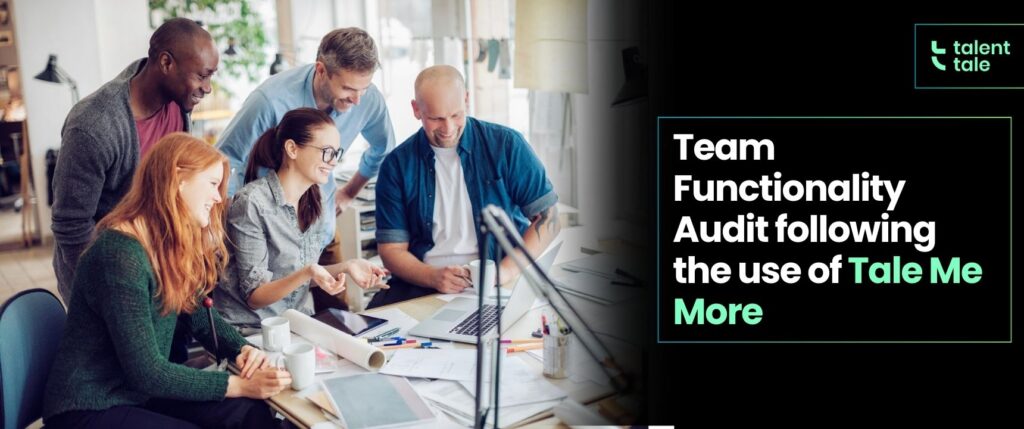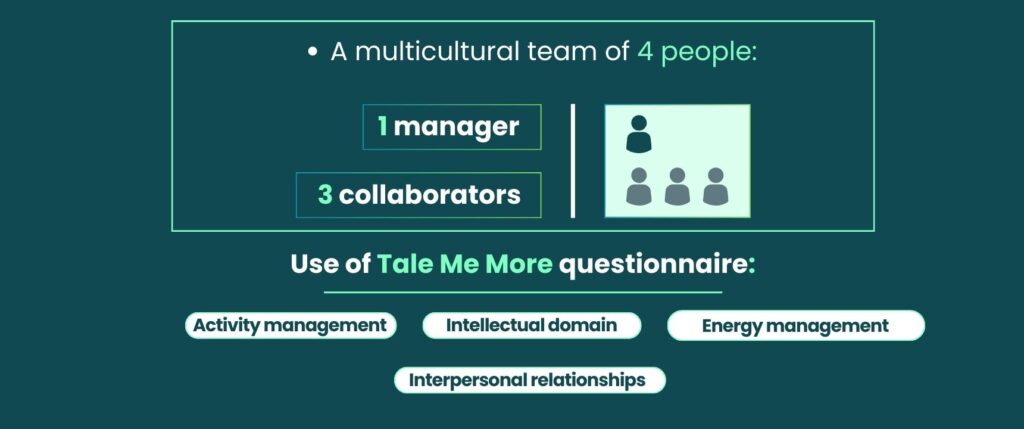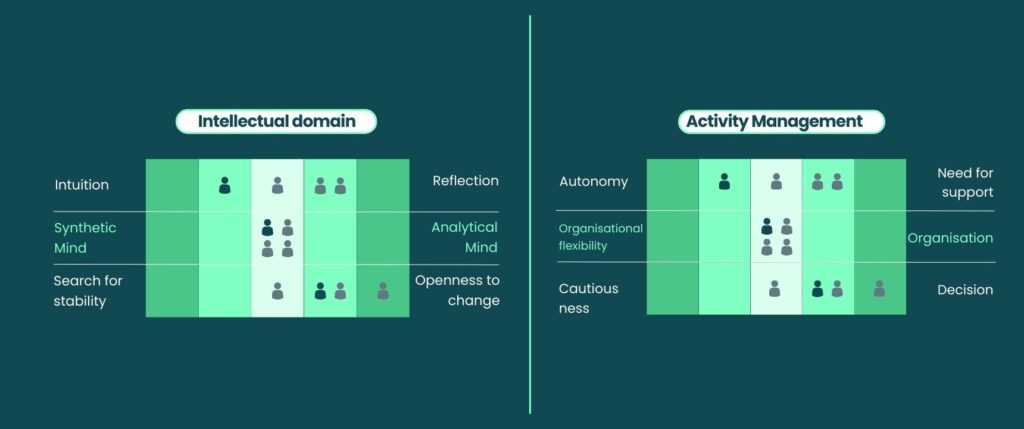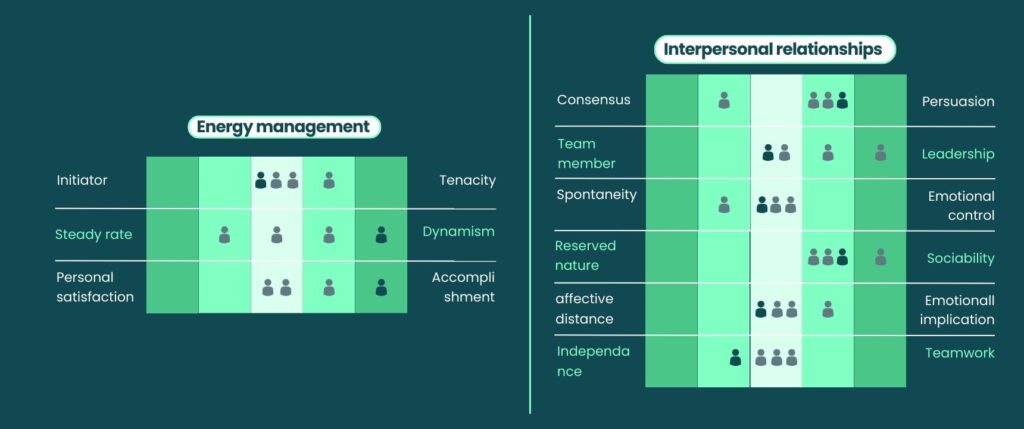How to work well together

Following the use of our Tale Me More® questionnaire, we have established a mapping of the soft skills covered by the team.
The consolidated analysis of the behavioral characteristics of team members has resulted in recommendations to develop collective dynamics.
Methodology

Team Profile


Team Characteristics
Areas of Homogeneity
- A self-sufficient team on a daily basis that does not require close hierarchical oversight. The need for support is below what is traditionally observed. One managerial consequence is to prioritize an approach that empowers rather than infantilizes in support. Focus at least as much on the why as on the how. However, with a rather autonomous population, it is essential to be vigilant about expectations in terms of reporting (neither too much nor too little). The low need for support generally provides a strong foundation.
- Above-average professional sociability (no one scores below 9), coupled with below-average emotional control (indicating spontaneity), suggests strong relational skills with good coverage of public relations, networking, informal relationship management, which overall suggests good qualities in managing commercial relationships (especially considering that, except for Marie, emotional involvement is well balanced).
- A good collective appetite and receptivity to novelty and change: a good open-mindedness; in general, the entire team demonstrates adaptability, agility, and no rigidity.
- Collective tenacity and finishing capabilities are generally well present and consistent with traditional observations.
- The sense of collective responsibility, in the middle range, is also well positioned, consistent with the autonomy within the team. However, on this point, management (Liam) may need to invest more significantly in this area to truly cement the team and create a sense of unity and belonging beyond the mere sharing of objectives. This point is related to the organization concept, which reveals some disparity within the team: low for Liam, high for Brent, average for Marie and Jessica. In essence, Liam should be careful to inject enough processes (but without rigidity) to structure teamwork more effectively.
Areas of Friction
- A strong disparity appears in terms of managing rhythms, energy, and dynamism. It’s very high for Liam, average for Brent, and low for Jessica and Marie: not everyone operates at the same pace, and some (especially Marie) may need to be “pushed.”
- The achievement criterion also shows a significant disparity, very high for Liam (a strong taste for challenge, a desire to exceed, a competitive spirit), high for Jessica, and somewhat lower (not dramatically so) for Marie and Brent. The combination of “dynamism and achievement” criteria being very high for Liam should be a lever of action, a strength to be shared, but it’s important to find the right balance to not “lose” the team. Therefore, Liam needs to learn patience, long-term time management, and take into account individual logic while maintaining a high level of energy, which is crucial for driving teams forward.
- The analysis of influence factors on the relational level (assertiveness, leadership) reveals that the team does not include “unmanageable critical minds,” and assertiveness is limited and below what is traditionally observed. One person falls short on this criterion: Jessica (who also has a lower score on leadership, indicating a lack of personal confidence and assurance).
- On the leadership front, there is a strong position for Marie, which, given her overall profile, suggests a status-oriented position, a desire to stand out, and an interest in power attributes, coupled with a reasonably high self-image. The profile also suggests an underlying level of mistrust, or at the very least, caution in relationships. She tends to remain on the defensive. In other words, she needs to be approached. In a completely new team, as the “most experienced,” she may have a tendency to want to take a distinct role.
- The analysis of reflection and decision-making criteria suggests a minor division within the team between the more cautious and reserved individuals (Marie and Jessica). They lean more towards reflection and less towards decision-making, initiative, action, and speed of execution. These profiles likely need a boost, while Brent and Liam are more dynamic, proactive, and action-oriented.

